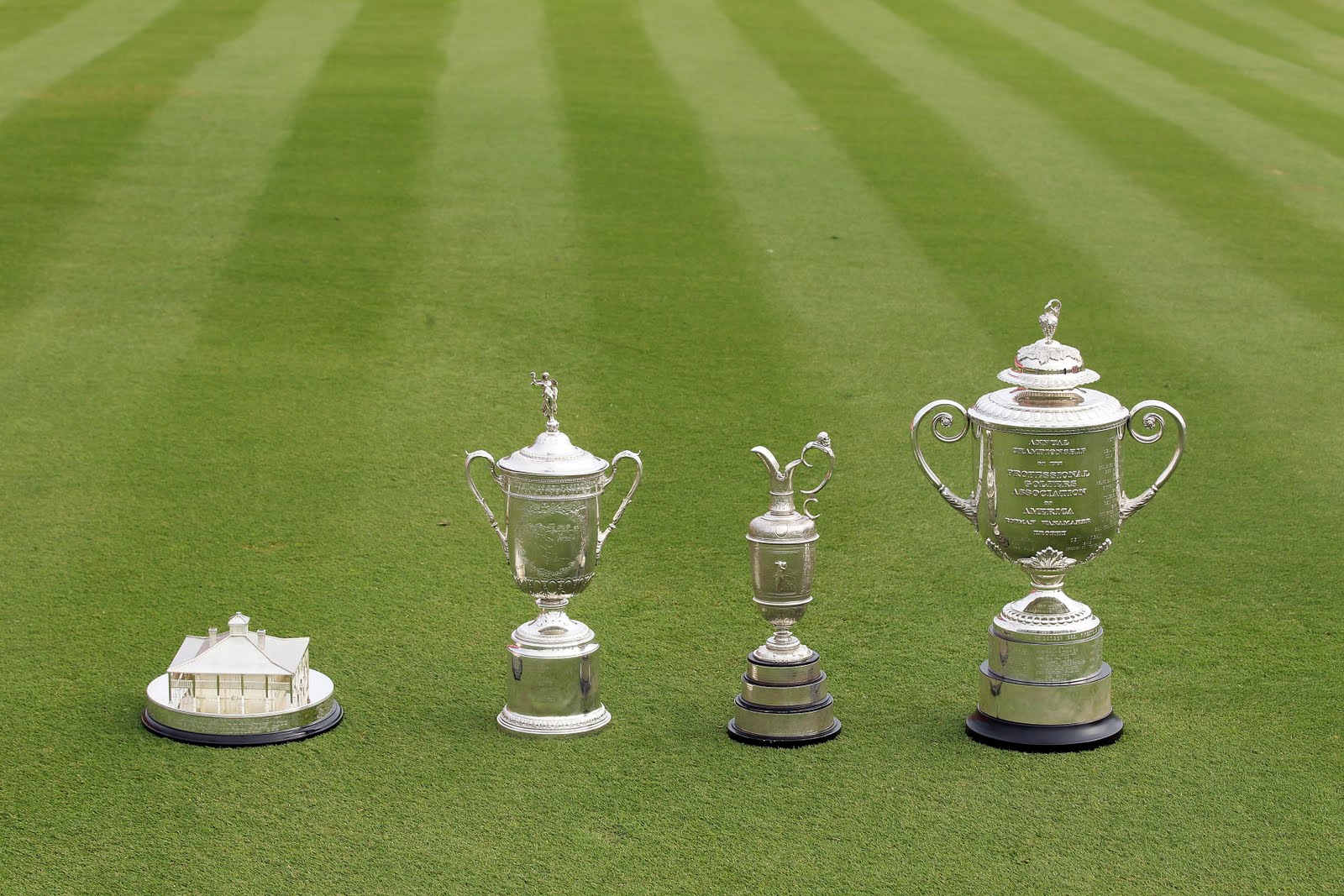What is a Golf Major

In the world of professional golf, there exists a realm of tournaments that stand above the rest—a select group of events that embody the pinnacle of excellence, tradition, and competition. These tournaments, known as Golf Majors, are the epitome of golfing glory and are coveted by players around the globe.
A Golf Major is not just an ordinary tournament; it is a stage where history is made, legends are born, and careers are defined. These four prestigious tournaments—the Masters, the U.S. Open, the Open Championship, and the PGA Championship—hold an unrivaled status in the golfing world. They offer a unique blend of fierce competition, storied traditions, and iconic venues that captivate the imagination of players and fans alike.
To win a Golf Major is to etch one’s name into the annals of the sport, joining the ranks of golfing greats who have triumphed on these hallowed grounds. It is a mark of skill, resilience, and mental fortitude—an achievement that elevates a golfer’s status and sets them apart from their peers.
In this article, we embark on a journey to explore the essence of Golf Majors. From their historical significance to the rivalries that have defined them, from the meticulous organization behind these tournaments to the impact of Major victories on a golfer’s career, we delve into the world of Golf Majors, uncovering the magic and allure that make them the crown jewels of professional golf.

What are the different Golf Majors?
Golf Majors consist of four prestigious tournaments: The Masters Tournament, the U.S. Open, the Open Championship (also known as the British Open), and the PGA Championship. Each Major has its unique characteristics, traditions, and challenges, making them distinct and highly anticipated events within the golfing calendar.
The Masters Tournament
The Masters Tournament, held annually at the Augusta National Golf Club in Georgia, United States, is the first Major of the year and perhaps the most revered. Known for its iconic green jacket and pristine course, the Masters combines rich history with a sense of exclusivity. The tournament is held in early April, heralding the arrival of spring and setting the stage for thrilling golf.
Augusta National is renowned for its undulating fairways, treacherous greens, and the famous Amen Corner—a stretch of holes that demands precision and strategy. The Masters boasts unique traditions, such as the honorary starters hitting the ceremonial tee shots, the green jacket presentation to the champion, and the Champions Dinner—a gathering of past winners. These traditions add to the allure and mystique of the Masters Tournament.
The U.S. Open
The U.S. Open is the second Major of the year and showcases the demanding nature of championship golf. Organized by the United States Golf Association (USGA), the tournament takes place on different courses across the United States. The U.S. Open is characterized by its rigorous qualification process and the challenging setup of the courses.
U.S. Open courses are known for their thick rough, narrow fairways, and lightning-fast greens. The USGA sets up the courses to test the skills and mental fortitude of the players, often pushing them to the limit. The U.S. Open has witnessed some memorable moments, including dramatic finishes, heartbreaking collapses, and breakthrough victories. It is an event that captures the attention of the golfing world and demands the utmost skill and resilience from its participants.
The Open Championship (British Open)
The Open Championship, often referred to as the British Open, is the oldest Major in golf, with a history that stretches back to 1860. It is held annually in the United Kingdom, on links-style courses that are markedly different from the parkland and inland courses seen in other Majors.
Links courses, characterized by their coastal locations and natural terrain, present unique challenges to golfers. The unpredictable weather, undulating fairways, deep bunkers, and firm, fast-running fairways require adaptability and creative shot-making. The Open Championship has produced some of golf’s most iconic moments, with players battling the elements and testing their skills on some of the world’s most renowned courses, such as St. Andrews, Royal Birkdale, and Royal Troon.
The PGA Championship
The PGA Championship, organized by the Professional Golfers’ Association of America (PGA), is the final Major of the year. The tournament boasts a rich history, with its first edition taking place in 1916. Unlike the other three Majors, the PGA Championship features a rotating selection of courses, offering a diverse range of challenges to the players.
The PGA Championship showcases a mix of traditional parkland courses and modern designs, providing a varied test of skill. The tournament has evolved over the years, transitioning from match play to stroke play and implementing various formats, including a sudden-death playoff to determine the champion. The PGA Championship has seen exceptional performances and thrilling battles, contributing to its reputation as one of golf’s most significant events.
How are Golf Majors organized?
The organization and scheduling of Golf Majors play a vital role in their appeal and impact on the golfing world. Understanding how these tournaments are structured and the qualification criteria involved provides insight into the magnitude and exclusivity of Golf Majors.
Scheduling and annual rotation of Golf Majors
Golf Majors are strategically scheduled throughout the year, offering a progression of prestigious events that captivate fans and players alike. The order in which the Majors occur creates a narrative that builds excitement and anticipation as the season unfolds.
The Masters Tournament traditionally kicks off the Major season in April, heralding the arrival of spring and setting the stage for the year’s most prestigious competitions. It is followed by the PGA Championship in May, the U.S. Open in June, and the Open Championship in July. This sequential arrangement ensures that the Majors are spread out across the golfing calendar, allowing players to prepare and build momentum leading up to each tournament.
The rotation of venues adds an additional layer of intrigue to Golf Majors. Each Major has a list of esteemed courses that take turns hosting the tournament, showcasing their unique qualities and challenges. The rotation ensures that players face different environments and styles of play, making each Major distinct and memorable.
However, it’s important to note that the scheduling and rotation of Golf Majors can be subject to external factors, such as the COVID-19 pandemic, which may necessitate changes to the calendar or venue selection to ensure the safety and well-being of all involved.
Qualification criteria for Golf Majors
Earning a spot in a Golf Major is no easy feat. Various qualification criteria are in place to ensure that the most deserving players have the opportunity to compete for these coveted titles.
Exemptions and invitations for top-ranked players
Top-ranked players in the Official World Golf Ranking (OWGR) and other recognized ranking systems are typically exempt from qualifying for Golf Majors. These exemptions allow the world’s best golfers to compete in the Majors automatically, based on their consistent performance and high standing in the rankings. This ensures that the tournaments feature the most elite field of players, adding to their prestige and competitiveness.
Qualifying tournaments and regional qualifiers
For players outside the top rankings, qualifying tournaments provide a pathway to earn a spot in a Golf Major. These qualifying events, often held regionally, offer players the opportunity to showcase their skills and earn their place among the best in the world. The qualification process typically includes a series of stages, starting with local and regional qualifiers, progressing to sectional qualifiers, and culminating in a final qualifying event.
The number of available spots in the Majors for qualifiers varies depending on the tournament. Typically, a mix of professionals and top-performing amateurs emerge from the qualifying process to compete against the exempted players, creating a blend of seasoned professionals and rising stars.
Special considerations for amateur golfers
Amateur golfers also have the opportunity to participate in Golf Majors, further enhancing the inclusivity and tradition of these tournaments. The top amateurs in the world, as determined by various ranking systems and performance in amateur championships, often receive invitations to compete alongside the professionals.
The presence of amateur golfers adds an element of excitement, as they showcase their talent and compete against the best in the world. It allows the Majors to connect with the sport’s roots and embrace the amateur tradition that has played a significant role in the development of golf.
What is the significance of winning a Golf Major?
Winning a Golf Major is a career-defining moment for any golfer. These victories hold immense significance and have a lasting impact on a player’s career, reputation, and standing in the annals of golfing history. Let’s explore why winning a Major championship is a cherished and coveted achievement.
The concept of a “Major championship” in golf
In golf, the term “Major championship” refers to the four prestigious tournaments we discussed earlier—the Masters, the U.S. Open, the Open Championship, and the PGA Championship. These tournaments are considered the most important events in professional golf, carrying the highest level of prestige and recognition.
Golf Majors are distinguished from regular PGA Tour events by their historical significance, challenging course setups, elevated prize money, and the aura they exude. Winning a Major signifies that a golfer has triumphed on the grandest stage, against the best competition, and under the most intense pressure. It is a testament to a player’s skill, composure, and ability to perform at the highest level when it matters most.
Influence on a golfer’s career and legacy
Winning a Golf Major has far-reaching implications for a golfer’s career trajectory and overall legacy in the sport. Let’s explore some of the key aspects that highlight the significance of Major victories.
Increased chances of induction into the World Golf Hall of Fame
The World Golf Hall of Fame recognizes and honors the most exceptional golfers throughout history. Major victories play a significant role in the Hall of Fame induction process, as they are considered a crucial criterion for eligibility. A golfer who accumulates Major wins solidifies their credentials and enhances their chances of receiving this prestigious recognition.
Impact on world rankings and endorsements
Winning a Golf Major has a profound impact on a player’s world ranking and the perception of their ability within the golfing community. Major victories often propel players to the top of the Official World Golf Ranking, showcasing their talent and consistency on a global scale.
Furthermore, Major champions become highly sought-after endorsers and ambassadors for golf-related brands. The prestige and exposure that come with Major victories open doors to lucrative endorsement deals, further enhancing a golfer’s financial success and visibility within the industry.
Comparison to other golf achievements
While all victories in professional golf are significant, winning a Major holds a unique place in the hierarchy of golf achievements. Major championships are often compared to other notable accomplishments, such as winning regular PGA Tour events or prestigious international tournaments.
Major victories are regarded as the pinnacle of success in the sport, with golfers often measured against the number of Majors they have won to determine their place in golf history. The pursuit of the record for the most Major wins, currently held by Jack Nicklaus with 18, adds an extra layer of intrigue and elevates the importance of these tournaments.
Key players and rivalries in Golf Majors
Golf Majors have witnessed legendary performances and captivating rivalries that have left an indelible mark on the sport. Let’s explore some of the key players who have excelled in Golf Majors and the notable rivalries that have unfolded on the grandest stages.
Historical players who have excelled in Golf Majors
Throughout the history of Golf Majors, several players have left an enduring legacy with their exceptional performances and multiple victories. Here are a few players who have achieved remarkable success in Major championships:
Jack Nicklaus and his record 18 Major victories
Jack Nicklaus, often referred to as the “Golden Bear,” is widely regarded as one of the greatest golfers of all time. Nicklaus amassed an astonishing record of 18 Major championships during his illustrious career, a feat that still stands as the most Major wins in history.
Nicklaus’ Major victories spanned over three decades, with his first coming in 1962 at the U.S. Open and his last in 1986 at the Masters, where he became the oldest winner of the tournament at the age of 46. His dominance in Majors and his ability to perform under pressure cemented his status as a golfing legend.
Tiger Woods and his pursuit of Nicklaus’ record
Tiger Woods is a name synonymous with golfing greatness. Woods burst onto the scene in the late 1990s and early 2000s, captivating the golfing world with his prodigious talent and unprecedented success. Woods has accumulated 15 Major victories to date, second only to Jack Nicklaus.
Woods’ impact on Golf Majors extends beyond his wins. His captivating performances, including his historic victory at the 1997 Masters, his “Tiger Slam” in 2000-2001 (where he held all four Majors simultaneously), and his thrilling playoff victories, have solidified his legacy as one of the game’s all-time greats.
Other notable players with multiple Major wins
Several other players have left their mark on Golf Majors with multiple victories. Golfing icons such as Arnold Palmer, Ben Hogan, Gary Player, Tom Watson, and more recently, Phil Mickelson and Rory McIlroy, have achieved success on the grandest stages, etching their names into Major championship history.
Noteworthy rivalries and memorable duels in Golf Majors
Golf Majors have witnessed memorable rivalries and intense battles that have captivated fans and added to the lore of these tournaments. Here are a few notable rivalries that have unfolded in Golf Majors:
Arnold Palmer vs. Jack Nicklaus in the 1960s
Arnold Palmer, known as “The King” of golf, and Jack Nicklaus engaged in a fierce rivalry throughout the 1960s. Palmer, with his swashbuckling style and charismatic personality, captivated fans, while Nicklaus, with his methodical approach and unwavering focus, posed a formidable challenge.
Their rivalry played out on numerous occasions in Golf Majors, including memorable duels at the U.S. Open and the Masters. The battles between Palmer and Nicklaus showcased contrasting styles and fueled the imagination of golf fans, elevating the stature of Golf Majors during that era.
Tom Watson vs. Jack Nicklaus in the 1970s and 1980s
The rivalry between Tom Watson and Jack Nicklaus captivated the golfing world in the 1970s and 1980s. Watson, known for his precision ball-striking and clutch putting, emerged as one of Nicklaus’ main challengers, creating thrilling moments in Golf Majors.
Their battles reached their zenith in the 1977 Open Championship at Turnberry, Scotland. Watson and Nicklaus engaged in an epic duel, producing some of the finest golf ever witnessed. Watson eventually emerged victorious, securing his place in golfing history and solidifying the rivalry between the two legends.
Recent rivalries and intense competition among the current generation of golfers
In recent years, Golf Majors have witnessed intense competition and captivating rivalries among the current generation of golfers. Players such as Brooks Koepka, Dustin Johnson, Jordan Spieth, and Justin Thomas have emerged as major contenders, challenging each other and pushing the boundaries of performance.
Their battles in Majors have produced nail-biting finishes, record-breaking performances, and captivating storylines. The competitive nature of these rivalries adds to the allure of Golf Majors, ensuring that the tournaments continue to captivate audiences and create lasting memories.
Evolution and changes in Golf Majors over time
Golf Majors have undergone various transformations and adaptations throughout their history, reflecting the evolution of the sport and the changing landscape of the golfing world. Let’s explore some of the notable developments that have shaped the Golf Majors as we know them today.
Historical developments in the structure and format of Golf Majors
The structure and format of Golf Majors have evolved significantly over time, driven by the desire to enhance competition, engage fans, and adapt to the changing landscape of the sport.
Transition from match play to stroke play
In the early years of Golf Majors, match play was the prevailing format. Golfers competed head-to-head, with the winner advancing to the next round. However, in the mid-20th century, the transition to stroke play took place, where players’ scores were measured by the total number of strokes over a designated number of rounds.
The shift to stroke play allowed for a more standardized and comprehensive assessment of a golfer’s performance, ensuring that consistency and overall skill were rewarded. Stroke play also introduced the concept of the cut, where the field is reduced after the first two rounds based on a specific score threshold, further intensifying the competition.
Introduction of playoffs and sudden-death finishes
To enhance the drama and excitement of Golf Majors, playoffs were introduced to determine the champion in the event of a tie at the end of regulation play. Playoff formats have varied over the years, including 18-hole playoffs, sudden-death playoffs, and aggregate score playoffs.
Sudden-death playoffs, where players compete hole-by-hole until a winner emerges, have provided some of the most thrilling moments in Major championship history. The high-pressure situations and the single-hole format create intense drama and capture the attention of fans worldwide.
Expansion of prize money and television coverage
As the popularity of golf grew and the global audience expanded, the financial stakes and media coverage surrounding Golf Majors also increased. Prize money for Majors has seen substantial growth, with the winners now receiving significant financial rewards, elevating the tournaments’ overall prestige and allure.
Additionally, the advent of television and the subsequent rise of golf broadcasting have brought Golf Majors into homes around the world. The live coverage, expert analysis, and immersive viewing experiences have enhanced the accessibility and enjoyment of Golf Majors, making them global sporting spectacles.
Course modifications and technological advancements in Golf Majors
Golf course design, technology, and equipment have all played a role in shaping the modern-day Golf Majors.
Changes to course design and lengthening of holes
Golf Majors have witnessed course modifications to maintain the challenge for players and keep up with technological advancements. One notable trend has been the lengthening of golf courses to counter the increasing distances achieved by modern equipment and players.
Major championship venues have undertaken renovations to extend holes, add strategic hazards, and adjust the overall layout to preserve the integrity of the challenge. These modifications ensure that the best golfers in the world are tested across a variety of skills, including accuracy, power, and course management.
Impact of equipment advancements on scoring and playstyle
Technological advancements in golf equipment, particularly in club and ball design, have influenced the scoring and playstyle in Golf Majors. The introduction of high-performance golf balls, improved club materials, and advances in club fitting technology have allowed players to achieve greater distances and more consistent ball flight.
These advancements have reshaped strategic decision-making on the golf course and led to adjustments in course setup to maintain the desired level of challenge. Governing bodies such as the USGA and R&A continuously monitor and regulate equipment standards to strike a balance between technological progress and preserving the traditional spirit of the game.
Balancing tradition with the need for modernization
Golf Majors face the delicate task of balancing tradition and history with the need for modernization and adaptation to a changing landscape. While preserving the essence and integrity of the tournaments, organizers continuously explore ways to enhance the fan experience, engage younger audiences, and adapt to societal shifts.
Efforts to modernize Golf Majors include embracing digital platforms for fan engagement, introducing innovative tournament experiences, and finding ways to attract a diverse and global audience. Maintaining the balance between tradition and innovation ensures that Golf Majors remain relevant and captivating for generations to come.
Conclusion
Golf Majors occupy a special place in the hearts of golfers and fans worldwide. These tournaments embody the pinnacle of golfing excellence, with their rich history, iconic venues, and legendary moments. Winning a Golf Major is the ultimate dream for professional golfers, propelling them into the annals of the sport and leaving an indelible mark on their careers.
As Golf Majors continue to evolve and captivate audiences, the allure and excitement surrounding these tournaments remain as strong as ever. The traditions, rivalries, and stories that unfold within the Majors shape the narrative of the sport and contribute to its enduring appeal. So, let us embrace the magic of Golf Majors, celebrating the triumphs, the challenges, and the timeless spirit of the game.






